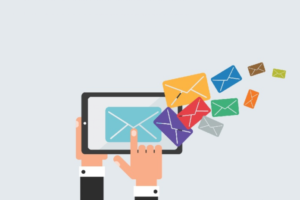
There is a finite opportunity if you are building an email relationship with your target audience, and it is very competitive. Hence, it is essential that you should get email marketing right. All it takes is just for your customer to make just one simple click and “unsubscribe” from your mailing list and that built relationship will be over.
So, the question is how can you guarantee a long lasting email relationship with your target audience?
Let us take a look.
1. Lack of Personalization
Email marketing in the current era does not necessarily mean that you should create more content or send excessive amounts of emails. It is all about you doing your work smarter and sending quality and lower quantity of emails to the correct segmented list of your subscribers for a better result.
Do not Send from a “Do Not Reply” Email Address – If you are sending an email from a No-Reply or DoNotReply email address it simply means that you are unfriendly, uninviting, and unwelcoming. Instead of you opting for the latter option, if you are sending your emails from a personalized address and one that will enable your subscribers to reply, it is key. Including your social media profiles, your phone numbers, your websites, and other information in the email footer can also add value to the end viewer and creates a more open environment.
Segment Your List – Another important point that you should note is segmentation. In the early days of email, one among the biggest mistakes that was made then was failing to segment their lists. Nowadays, people are sore tired of the generic “one size fits all” marketing, and consumers are more likely to start an interaction with content that is targeted and based on their demographics, their purchasing habits, and their past behaviors.
2. Poor Sender Reputation
The Email deliverability and also the sender reputation are key metrics that you need to routinely monitor. You can possibly build these up and optimize your analytics quite as quick as possible, but also you can ruin them in just a split second as a result of having a bad email campaign.
The Email analytics and the monitoring can get kind-of complicated, but having clear benchmarks that is reflecting the best practices makes it the easier for you to decipher the data. For example, a 95 percent delivery rate is considered good by email providers.
The most effective way that you can improve your sender reputation, and also maintain high metrics is to send high value and quality emails that your subscribers will want to open. Nevertheless, the ultimate goal for you to have is to appear legitimate and trustworthy to your subscribers, and that you are always sending relevant and enriching emails is the easiest way for you to maintain a high sender reputation.
3. Over-Complicating Emails
When it comes to proper email marketing, the trick is just keeping it simple. Just try and stick to one resounding message in the content, which is directly tied back to your subject line. If you are planning on having any further offers you can still add these lower in the body of the email, although it is very important that you make sure the header section and the introduction are the main focus.
Another important thing that you should note is load speed and adaptability for the mobile devices. Bulky emails that are not adaptive can frustrate the end-user, which in turn will have a negative impact on the ROI, the open rates, the engagement, and sales.
Every email you are sending should have a clear and concise call to action. There are many variety of calls to actions that can work well for your email marketing, encouraging subscribers to make a purchase of a product, or asking them to start following a specific social media account are a few examples. Try to refrain from just sending emails without including call to action, as it does not offer value to your audience and can get written off as spam ultimately.